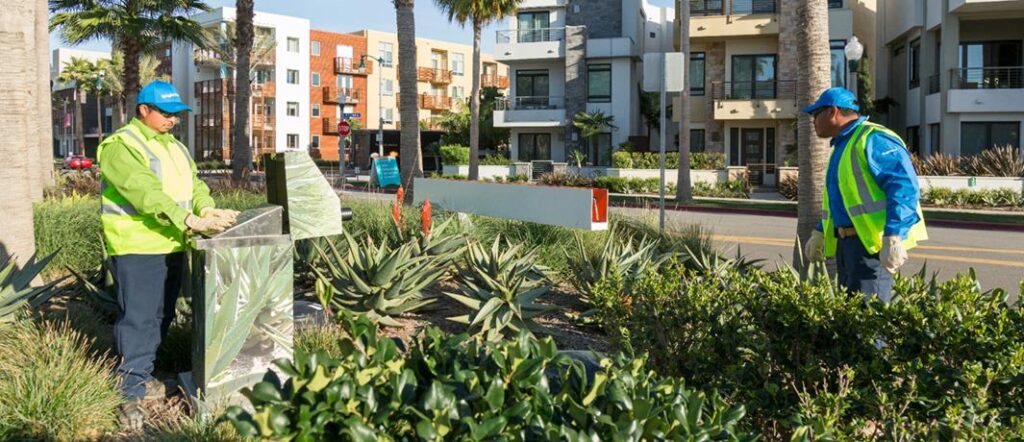A Millburn Landscaping & Design company finds its specialty by implementing advanced watering tactics for a business client. The watering administrator at the company examines a catch cup during audit work.
Water management in the environment is a requirement in drought-stricken regions. Reservations about drought often encourage consumers to adopt more water-efficient landscaping solutions in Millburn. When a client contacts Millburn Landscaping & Design irrigation manager, they desire to modernize the watering system of the business space and save as much water as possible. The client wants to be on the cutting edge of water conservation in Salt Lake City.
The company provides the irrigation crew and others who signed on to the program the chance to achieve something groundbreaking in the area. They add a weather-based microcontroller to optimize the watering procedure and schedule and conduct rigorous audits.
The Initial Step
Millburn Landscaping & Design believes that getting to know the client is the first step toward implementing this water management initiative. What are their requirements, and what do they want to achieve through this task? These are the two most important questions Millburn wants to know the answers to.

The company needs to be on the cutting edge of this nationwide water management business. As part of their company-wide green initiative, this is their key goal. This would be a difficult task for a large property of fescue turf scattered with buildings, mixed-use structures, and roadways.
Millburn Landscaping & Design knows the first piece of the program’s structure to satisfy these water-efficient requirements. The first step is to replace all existing irrigation timers with weather-based systems.
It’s the only method to alter your timetable daily without visiting that location, doing the 10-step computation, and then modifying for evapotranspiration loss. For them, there’s no better method to save every customer money and preserve water than switching to a weather-based controller right now.
Installation of the Controllers
Intending to put weather-based clocks in place, the crew and the client examine the project area’s inventory to identify where the biggest solid blocks of turf by square foot area are located and thus where they’d begin. They would start with whichever has some of the most turf square footage for a good return on investment. There’s a lot of watered fescue turf throughout the planting period.
However, when it comes to inventorying the current system, the original plan hit a snag. Millburn Landscaping & Design wants master valves and flow sensors on everything at first. The main problem seems to be that they couldn’t always acquire the wire path they need, so they need to get innovative.
Despite this, the weather-based timers can be installed. Specialists from Millburn Landscaping & Design team learn how to use it and program smart controllers thanks to workers from the controller maker who came out to the project site to conduct training.
The installers become familiar with weather-based timers as a group, learning how to configure them and provide the required data.
The Difficult Portion
After the weather-based timers are set, and data has been collected, the “hardest thing” of the program starts, figuring out how to maintain the system and get the most efficient water-saving results feasible. This is accomplished by thoroughly and personally auditing the overall structure.
Then they are digging a little further into it to see why this system utilizes these gallons of water per minute, the precipitation rate, the distributing consistency, and how they can improve that? It’s a lengthy process with many numerical methods, but it’s an interesting one that they have been dealing with.
The crew installs catch cups in a grid around the land based on the spray kind and sets the sprinkler zone to run for 10 to 30 minutes. The capacity of each catch cup is then read to determine how evenly the water is distributed and the inches per hour. With this data, the irrigation crew can calculate ET loss and establish the necessary water duration for the month according to the soil conditions.
The main purpose of the auditing procedure is to uncover further improvement areas and better manage the irrigation schedule.
While accounting, most individuals will go there, switch it on for twenty minutes, program the watering for the entire year, and then leave it alone; however, by doing so, they can adjust or plan irrigation each month to maximize efficiency.
The team works on a couple of audits a week every week across the program area’s several buildings, intending to finish them all early.
Auditing Should be Emphasized
The attention to audit is what sets this enterprise apart from everyone else. At the commencement of the process, the company hires a Certified Landscape Irrigation Auditor accreditation from the Irrigation Society, giving them the expertise he needed to handle such a tough task.
The company detects significant pressure variations as a result of the audits. They note that they assume the pressure would have been too high for some locations and needed pressure management until audits revealed the pressure on a spray head. However, audits reveal that several properties’ spray heads had 60 to 70 psi pressures. In certain circumstances, the team is left to figure out what is causing the differences.
The company learns a lot about the irrigation facilities and their variations by undertaking hands-on audits. They discover that even when a system appears to be working properly, the distribution homogeneity can be as low as 50%, requiring additional work.
The Finish Line
The program’s final touches are to take everything learned from the audit work and create a plan to install pressure-regulated sprinkler systems and flow sensors on all buildings. The idea is to go over all of the processes this year and have everything functioning properly and up-to-date by next year.
This endeavor, however, will never be completed because of irrigation’s ever-improving technology.
Looking back
Millburn Landscaping & Design recognizes the value of taking the time to do full audits due to this initiative. Others should follow the Irrigation Association’s audit function, as it can reveal flaws in a system that an irrigation expert might not be aware of.

It all starts with audits and obtaining all of the data. Even if you don’t have the smart controller installed, you can utilize the audit information to build a schedule that will save a significant amount of water by eliminating waste.
Another novel aspect of the endeavor that Millburn Landscaping & Design discoverers are a complete dependence on computers and the internet. They are familiar with essential and fundamental, and cutting-edge irrigation technologies.
Millburn Landscaping & Design communicates any notifications of concerns in the field directly to the client via software, which is especially useful for the flow measuring equipment they can install.
Because of this project, Millburn Landscaping & Design can combine a demanding water management plan with a thorough auditing process. It is a chance for Millburn Landscaping & Design, the staff, and the client to learn something new.
It is a fantastic project where we can go deeper and explain to the customer that this is your type of soil, and this is how the amount of water your soil will truly hold.




